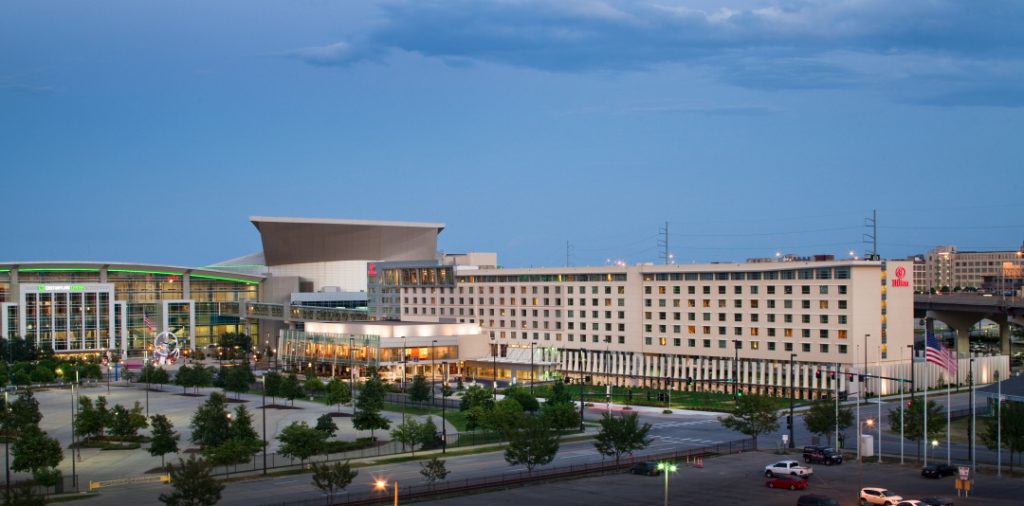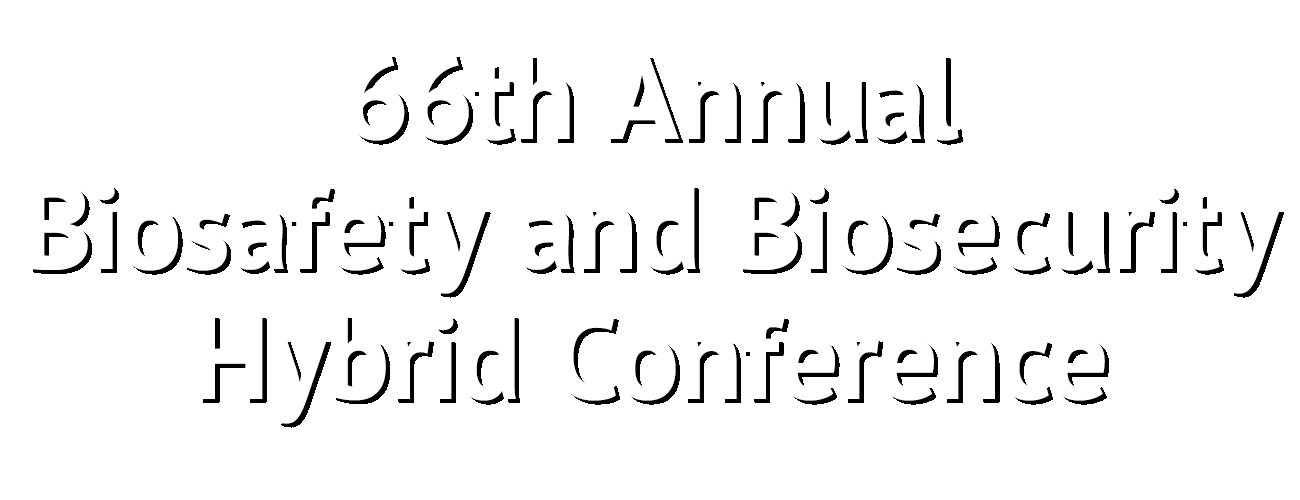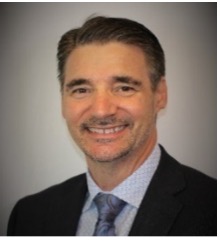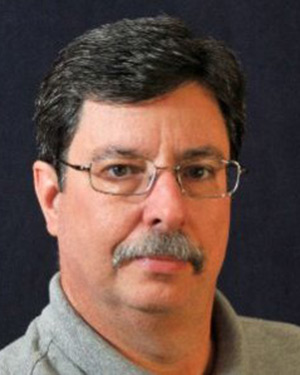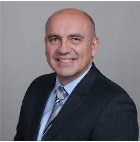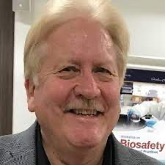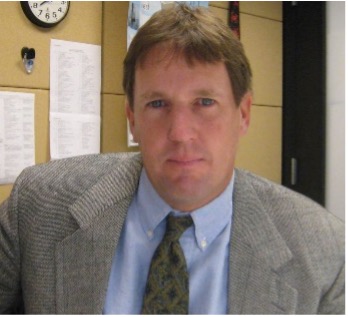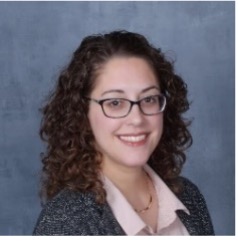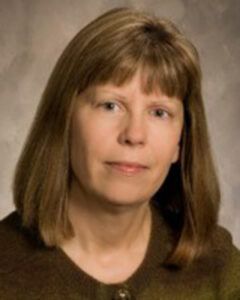Professional Development Courses
All times listed are in CENTRAL TIME ZONE
Saturday Courses
Saturday, October 14, 2023
CHI Health Center, Omaha, Nebraska
Saturday, October 14, 2023, 8:00 AM – 5:00 PM, Room 206
4. Facilities Fundamentals for Biosafety Professionals
This course is aimed at strengthening safety at biocontainment facilities by helping biosafety professionals understand how facility operations support overall biocontainment operations. Through a mixture of presentations from experts in the field and interactive exercises, participants will reinforce their knowledge of discrete facility system function and ways individual systems complement each other holistically in operating biocontainment facilities. Participants will gain practical knowledge of related facility issues (e.g., facility design, maintenance, performance verification, and waste management) and their roles in them. The target audience for the course is biosafety professionals who come with backgrounds other than facilities, and it is open to both newcomers and seasoned veterans in biosafety.
Objectives:
- Clarify the practical knowledge gained of facility issues (e.g., design, maintenance, and performance verification) and their roles in them
- Develop an understanding of specific infrastructure, equipment, and systems related to the operation of a biocontainment facility
- Interpret how specific facility systems operate and support biocontainment
Suggested Background: Fundamentals of Biosafety, Risk Assessment, Principles and Practices of Biosafety
Target Audience: All Safety Professionals, All Biosafety Professionals, Facilities Personnel
PDC Level: Intermediate
COURSE FACULTY
CONTACT HOURS
This course has been approved for 1.0 CM points toward RBP/CBSP recertification. ABSA International is approved as a provider of continuing education programs in the clinical laboratory sciences by the ASCLS P.A.C.E.® Program. This course is approved for 7.5 P.A.C.E.® contact hours.
Saturday, October 14, 2023, 8:00 AM – 5:00 PM
5. Facility Commissioning and Recommissioning for BSL-3 Laboratory
By understanding the commissioning and recommissioning processes, it can assist the biosafety professional in start-up or maintaining their laboratory operations to perform the program. Laboratory commissioning, identified in containment guidance documents, is a quality assurance process for the effective functioning of biocontainment laboratories. The biosafety officer and other decision makers benefit by having a basic understanding of the commissioning and recommissioning processes and resulting documentation. This course will review the phases of the new facility commissioning process and similar process for recommissioning. This knowledge base allows the biosafety professional to recognize how commissioning assists in providing and documenting a properly operating facility. A review of the secondary containment features of the BSL-3 laboratory will be disucssed and note specific issues typically observed. There will be a focus on two issues, the reversal of directional airflow and sealing of surfaces and penetrations. Participants will consider methods to identify the issues and present some specific mitigations of these issues; can actively participate in the commissioning/recommissioning processes and understand the methodology, the tools, results, and their interpretation; will know their facility operates correctly, its limitations, and the risk when it does not. This knowledge allows the biosafety professional to check or back check the containment spaces’ performance and use this knowledge to perform daily inspections for maintenance or replacement and control risk to the lowest level. The biosafety professional can identify required features in a new laboratory or review an existing lab with a better understanding of typical issues to assure safe reliable operations.
Objectives:
- Develop an understanding of the overall commissioning and recommissioning processes for containment labs
- Articulate the engineering controls required and effectively participate in the processes
- Identify typical issues observed during commissioning/recommissioning of the laboratory secondary containment barriers and the options for practical solutions to those issues
- Demonstrate a knowledge base and provide documentation to better perform daily inspections to reduce risk for safe and reliable laboratory operations
Suggested Background: None
Target Audience: All Safety Professionals, Laboratory Workers, Operations and Maintenance Personnel
PDC Level: Intermediate
COURSE FACULTY
CONTACT HOURS
This course has been approved for 1.0 CM points toward RBP/CBSP recertification. ABSA International is approved as a provider of continuing education programs in the clinical laboratory sciences by the ASCLS P.A.C.E.® Program. This course is approved for 7.5 P.A.C.E.® contact hours.
Saturday, October 14, 2023, 8:00 AM – 5:00 PM, Room 207
6. Engineering for the Biosafety Professional Part II
Proactive biosafety professionals need to be involved and knowledgeable in the operation, maintenance, and certification of their containment facilities and building systems. Frequently, the biosafety professional is called upon to participate in the planning, design, and validation of a new biocontainment laboratory or renovation of an existing facility. This course provides basic engineering principles that are useful in the planning, design, construction, maintenance, and operation of a BSL-3 or high-containment facility. The principles are expanded to BSL-4 or maximum containment facilities for clarity between BSL-3 and BSL-4 requirements. To participate in these activities, the biosafety professional will need a foundation of engineering fundamentals, skills to ask questions in engineering terms, and the confidence to question the answers. Topics covered include interpreting architectural and engineering drawings including plan views, personnel and waste flows, scaling, calculating air changes, and an in-depth review of HVAC drawings, airflow reversal mitigation, and engineering redundancies. There will be a review of commissioning and certification processes, including elements of ventilation assessment. Individual and group exercises will be conducted for practical application of principles presented. Building on “Engineering for the Biosafety Professional – Part I,” this course will integrate examples that show cause and effect in real-life scenarios.
Objectives:
- Discuss engineering principles
- Apply engineering assessment tools for architectural and engineering drawings
- Evaluate engineering solutions
Suggested Background: Fundamentals of Biosafety, Engineering for the Biosafety Profession Part 1 (preferred)
Target Audience: All Safety Professionals, New Biosafety Professionals
PDC Level: Intermediate
COURSE FACULTY
CONTACT HOURS
This course has been approved for 1.0 CM points toward RBP/CBSP recertification. ABSA International is approved as a provider of continuing education programs in the clinical laboratory sciences by the ASCLS P.A.C.E.® Program. This course is approved for 7.5 P.A.C.E.® contact hours.
Saturday, October 14, 2023, 8:00 AM – 5:00 PM, Room 208
7. Animal Research for Biosafety Professionals – Advanced
This course builds on general principles presented in the introductory class (Animal Research for Biosafety Professionals—An Introduction) and focuses on complex animal and research-based scenarios that present unique and challenging safety concerns. Topics include viral vectors; patient-derived xenografts (PDX) and humanized animals; nanoparticles; cytotoxic drugs; arthropod containment within a vivarium; aquatic animal models; wildlife species; biosecurity challenges; facility design; animal imaging; high-containment; animal program disaster planning; and management of chemical and biological wastes (e.g., bedding and carcasses). Proven strategies for optimizing safety program outcomes through constructive partnerships between various disciplines, including safety professionals and key animal program representatives will be presented. The course will be highly interactive and focus on problem-based learning through scenarios and interactive exercises that illustrate “real world” examples in research facilities, diagnostic laboratories, and teaching programs that use animals. Participants will practice developing strategies to identify potential hazards, assess the magnitude and extent of induced risks, learn about case-specific variables that can influence management options, and implement effective and cost-efficient control measures that protect the safety of workers, animals, and the environment.
Objectives:
- Review hazard identification and risk assessment strategies as they pertain to a variety of animal models, including aquatics and wildlife, and complex animal facility environments
- Apply effective control strategies for unique animal hazards through proactive experimental design and facility management procedures
- Identify ways safety professionals can partner with animal program personnel to address new and emerging safety issues associated with animal-based research
Suggested Background: Basic knowledge of, and experience with, identifying and managing common hazards found in animal research (Animal Research for Biosafety Professionals – An Introduction)
Target Audience: Experienced Biosafety Professionals, All Safety Professionals, Laboratory Workers, Experienced IACUC and Safety Committee Members
PDC Level: Advanced
COURSE FACULTY
CONTACT HOURS
This course has been approved for 1.0 CM points toward RBP/CBSP recertification. ABSA International is approved as a provider of continuing education programs in the clinical laboratory sciences by the ASCLS P.A.C.E.® Program. This course is approved for 7.5 P.A.C.E.® contact hours.
Saturday, October 14, 2023, 8:00 AM – 12:00 PM, Room 209
8. Practical Aerobiology Concepts
This course will provide biosafety professionals with an understanding of tools used to generate and sample bioaerosols. Course discussion will cover how bioaerosols are generated, common experimental aerosol generators, and factors that control number of organisms in a single particle. Subsequent material will cover sampling conditions and samplers that are appropriate to collect bioaerosols. The advantages and disadvantages of different bioaerosol generators and samplers will be discussed throughout. Practical application of bioaerosol generators and samplers will be covered both in didactic lecture and small-group activities.
Objectives:
- Describe how bioaerosols are experimentally generated through different aerosol generators
- Identify the factor(s) that control number of organisms contained in a single particle
- Summarize the advantages and disadvantages of different bioaerosol samplers
Suggested Background: Fundamentals of Biosafety, Principles and Practices of Biosafety
Target Audience: All Safety Professionals, New Biosafety Professionals
PDC Level: Intermediate
COURSE FACULTY
CONTACT HOURS
This course has been approved for 0.5 CM points toward RBP/CBSP recertification. ABSA International is approved as a provider of continuing education programs in the clinical laboratory sciences by the ASCLS P.A.C.E.® Program. This course is approved for 3.5 P.A.C.E.® contact hours.
Saturday, October 14, 2023, 8:00 AM – 12:00 PM, Room 205
9. Intersection Between Biosafety and Infection Control: An Introduction to Infection Control and Biosafety in Clinical Spaces
This course is meant for the biosafety professional who would like to learn more about application of biosafety principles in the clinical environment and partnering with Infection Control Departments in health systems. This is increasingly important as clinical trials using biological therapeutics, such as human gene transfer (HGT), require safety professionals to develop investigational product handling, preparation, and administration protocols that align with current clinical safety practices and environments. The goals of this course are to introduce different clinical environments, specific biosafety considerations for each space, hospital regulatory requirements that influence safety protocols, and how to collaborate with hospital infection control professionals to operationalize safety protocols in a way that’s meaningful to hospital staff.
Objectives:
- Describe inpatient, procedural and outpatient clinical environments and how this affects implementation of biosafety practices
- Restate the similarities and differences between biosafety levels, isolation precautions, and standard precautions
- Summarize how NIH and BMBL guidelines relate to hospital regulatory and accreditation requirements when creating protocols for HGT clinical trials
Suggested Background: Principles and Practices of Biosafety
Target Audience: All Safety Professionals, All Biosafety Professionals
PDC Level: Intermediate
COURSE FACULTY
CONTACT HOURS
This course has been approved for 0.5 CM points toward RBP/CBSP recertification. ABSA International is approved as a provider of continuing education programs in the clinical laboratory sciences by the ASCLS P.A.C.E.® Program. This course is approved for 3.5 P.A.C.E.® contact hours.
Saturday, October 14, 2023, 1:00 PM – 5:00 PM NOW A VIRTUAL COURSE: Jan 23, 2024, 11:30-4pm CST
10V. Institutional Biosafety and Biosecurity – Enhancing Oversight through Effective Governance
This course will discuss the importance of ensuring institutions have robust and comprehensive biosafety and biosecurity governance structures in place. Information will be provided about Federal activities related to strengthening biosafety and biosecurity practices and oversight. Participants will discuss and share tools and best practices that institutions can employ to enhance their biosafety and biosecurity programs.Participants will break into small groups to discuss a case study involving a biosafety incident occurring at an institution subject to the NIH Guidelines for Research Involving Recombinant or Synthetic Nucleic Acid Molecules (NIH Guidelines), which illustrates the importance of institutional biosafety oversight and how inadequate local oversight can result in significant problems. Participants should ideally have a working knowledge of the roles and responsibilities of institutions, Institutional Biosafety Committees (IBCs), and Institutional Review Entities (IREs) for biosafety and biosecurity oversight of research subject to the NIH Guidelines and the U.S. Government Policy for Institutional Oversight of Life Sciences Dual Use Research of Concern (DURC).
Objectives:
- Describe how to implement an effective program of biosafety and biosecurity oversight
- Paraphrase common challenges and possible solutions
- Identify tools and best practices that institutions can employ to strengthen their biosafety and biosecurity programs
- Summarize the requirements for reporting incidents under the NIH Guidelines and the importance of ensuring robust and comprehensive biosafety and biosecurity governance structures are in place
Suggested Background: IBC Basics, Background knowledge of the NIH Guidelines for Research Involving Recombinant or Synthetic Nucleic Acid Molecules
Target Audience: All Biosafety Professionals, IBC members, research compliance staff
PDC Level: Intermediate
This webinar will be one 4-hour webinar session on Tuesday, January 23, 2024, 11:30 AM – 4:00 PM CST with a 30-minute break. For the webinar, you should plan on logging in at 11:15 am (CDT) on January 23, 2024. You are required to attend the webinar session, complete the pre-course and post course assessments, and complete the evaluation in order to receive the completion certificate through the ABSA International Training Site. The link in the invitation will be unique to the user and cannot be shared.
CONTACT HOURS
This course has been approved for 0.5 CM points toward RBP/CBSP recertification. ABSA International is approved as a provider of continuing education programs in the clinical laboratory sciences by the ASCLS P.A.C.E.® Program. This course is approved for 3.5 P.A.C.E.® contact hours.
COURSE FACULTY
COURSE FEES
ABSA Members: $440 USD
Nonmembers: $540 USD
To obtain the ABSA member rate, the participant will need to be an ABSA member in the year in which the training is offered. Course fees include: course handouts, access to the ABSA International training site, and 4-hours of interactive instruction from a well-respected subject matter expert.
Confirmed, paid participants will be sent detailed information regarding the course approximately one week prior to the course. Substitutions allowed with notice by 12/26/2023. There is a 15% processing fee for cancellations prior to 12/26/2023. Cancellations between 12/26/2023 and 1/2/2024 will be refunded at 50% of the course fee. No refunds after 1/2/2024.
The links to the various invitations for the course will be unique to the user and cannot be shared. The links are for single, individual use only. If more than one occurrence of an individual’s name is on the attendee list for the webinar through Zoom platform all instances of that person’s name will be removed from the webinar with no refund. The webinar and its associated links are for single, individual use only.
Saturday, October 14, 2023, 1:00 PM – 5:00 PM
11. Respiratory Protection for Biosafety Professionals
This course will provide an overview of respiratory protection personal protection equipment (PPE), including selection considerations for biological and chemical hazards. A deeper dive into key hazards relevant to biosafety professionals and their respiratory protection considerations will follow. While mostly based on U.S. OSHA Respiratory Protection Program requirements, much of theinformation presented will be applicable internationally.
Objectives:
- Describe the basic process for hazard and exposure assessment necessary for selecting appropriate respiratory protection
- Identify the types and styles of respiratory protection equipment, in addition to U.S. OSHA requirements for their use
- Summarize the process of respirator selection and program implementation in their workplace for key hazards
Suggested Background: None
Target Audience: All Biosafety Professionals, All Safety Professionals
PDC Level: Intermediate
COURSE FACULTY
CONTACT HOURS
This course has been approved for 0.5 CM points toward RBP/CBSP recertification. ABSA International is approved as a provider of continuing education programs in the clinical laboratory sciences by the ASCLS P.A.C.E.® Program. This course is approved for 3.5 P.A.C.E.® contact hours.

